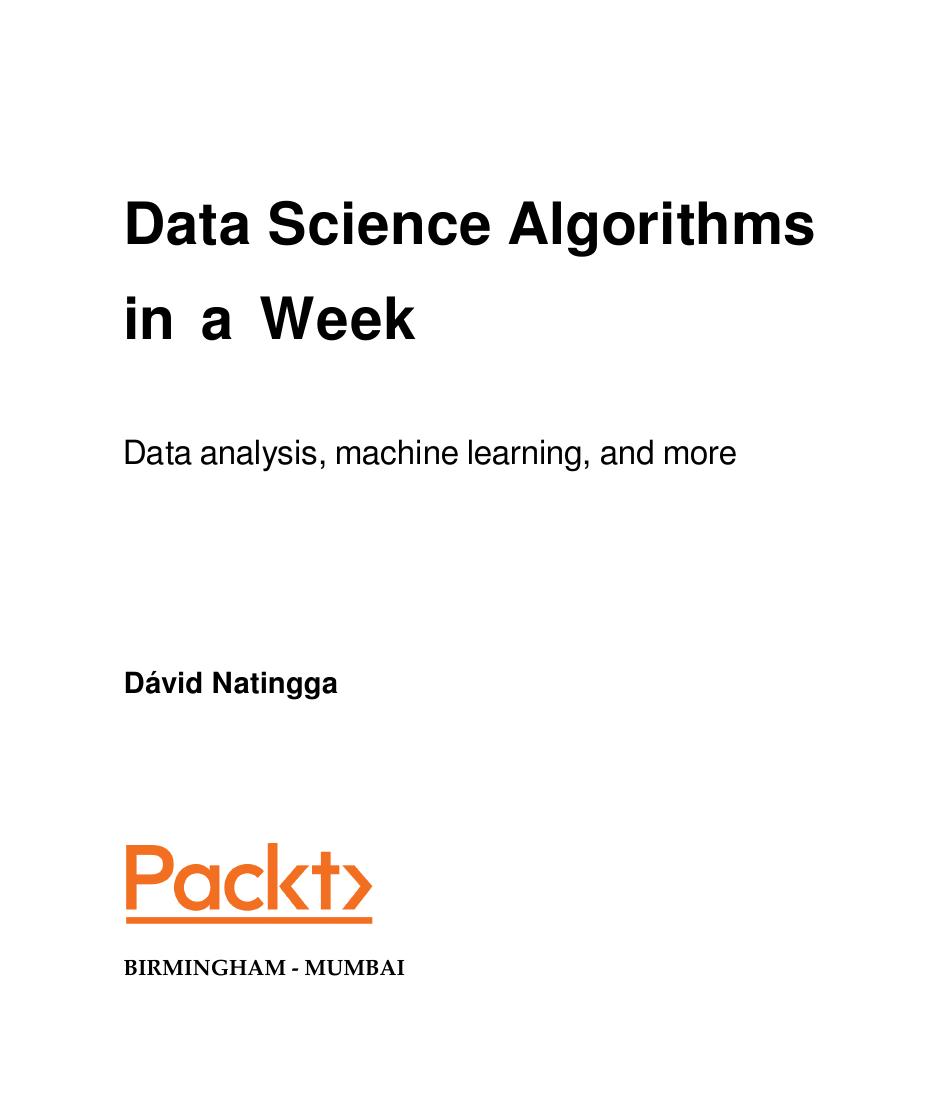Data Science Algorithms in a Week by Dávid Natingga

Author:Dávid Natingga
Language: eng
Format: epub, pdf
Publisher: Packt Publishing
Published: 2017-08-16T11:09:47+00:00
Playing chess example
We will use the example from the Chapter 2, Naive Bayes and Chapter 3, Decision Tree, again.
Temperature
Wind
Sunshine
Play
Cold
Strong
Cloudy
No
Warm
Strong
Cloudy
No
Warm
None
Sunny
Yes
Hot
None
Sunny
No
Hot
Breeze
Cloudy
Yes
Warm
Breeze
Sunny
Yes
Cold
Breeze
Cloudy
No
Cold
None
Sunny
Yes
Hot
Strong
Cloudy
Yes
Warm
None
Cloudy
Yes
Warm
Strong
Sunny
?
However, we would like to use a random forest consisting of four random decision trees to find the result of the classification.
Analysis:
We are given M=4 variables from which a feature can be classified. Thus, we choose the maximum number of the variables considered at the node to be m=min(M,math.ceil(2*math.sqrt(M)))=min(M,math.ceil(2*math.sqrt(4)))=4.
We are given the following features:
[['Cold', 'Strong', 'Cloudy', 'No'], ['Warm', 'Strong', 'Cloudy', 'No'], ['Warm', 'None', 'Sunny',
'Yes'], ['Hot', 'None', 'Sunny', 'No'], ['Hot', 'Breeze', 'Cloudy', 'Yes'], ['Warm', 'Breeze',
'Sunny', 'Yes'], ['Cold', 'Breeze', 'Cloudy', 'No'], ['Cold', 'None', 'Sunny', 'Yes'], ['Hot', 'Strong', 'Cloudy', 'Yes'], ['Warm', 'None', 'Cloudy', 'Yes']]
When constructing a random decision tree as a part of a random forest, we will choose only a subset of them in a random way with replacement.
Download
Data Science Algorithms in a Week by Dávid Natingga.pdf
This site does not store any files on its server. We only index and link to content provided by other sites. Please contact the content providers to delete copyright contents if any and email us, we'll remove relevant links or contents immediately.
Algorithms of the Intelligent Web by Haralambos Marmanis;Dmitry Babenko(8517)
Building Statistical Models in Python by Huy Hoang Nguyen & Paul N Adams & Stuart J Miller(7297)
Azure Data and AI Architect Handbook by Olivier Mertens & Breght Van Baelen(7296)
Serverless Machine Learning with Amazon Redshift ML by Debu Panda & Phil Bates & Bhanu Pittampally & Sumeet Joshi(7182)
Data Wrangling on AWS by Navnit Shukla | Sankar M | Sam Palani(6945)
Driving Data Quality with Data Contracts by Andrew Jones(6928)
Machine Learning Model Serving Patterns and Best Practices by Md Johirul Islam(6670)
Learning SQL by Alan Beaulieu(6152)
Weapons of Math Destruction by Cathy O'Neil(6075)
Big Data Analysis with Python by Ivan Marin(5687)
Data Engineering with dbt by Roberto Zagni(4683)
Solidity Programming Essentials by Ritesh Modi(4344)
Time Series Analysis with Python Cookbook by Tarek A. Atwan(4181)
Pandas Cookbook by Theodore Petrou(3905)
Blockchain Basics by Daniel Drescher(3418)
Hands-On Machine Learning for Algorithmic Trading by Stefan Jansen(2954)
Natural Language Processing with Java Cookbook by Richard M. Reese(2911)
Feature Store for Machine Learning by Jayanth Kumar M J(2858)
Learn T-SQL Querying by Pam Lahoud & Pedro Lopes(2843)
